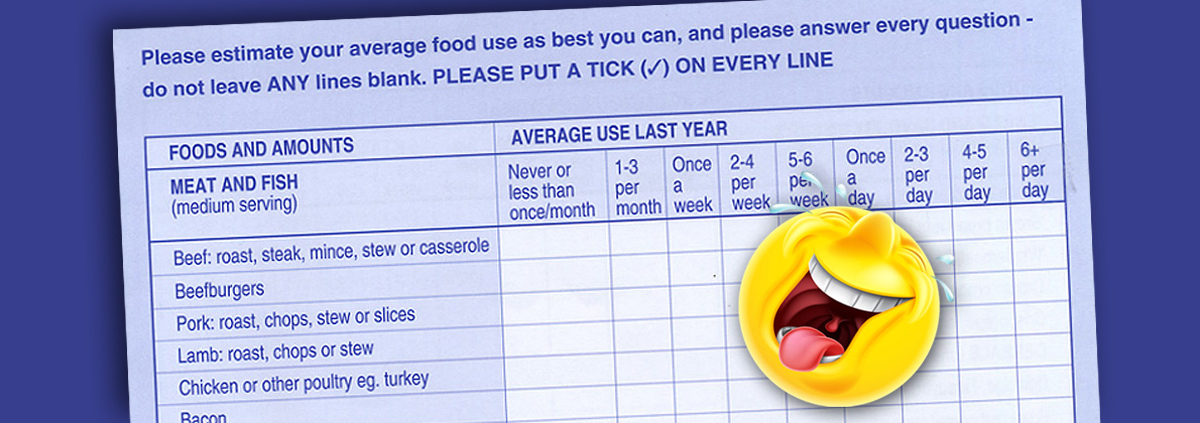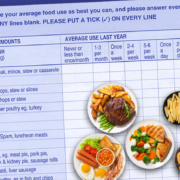How to Assess Food Intake
If you’ve been reading the Memo for any length of time, you know that I’m not fond of the methods used for determining food intake in free-living individuals, especially the Food Frequency Questionnaire. When looking at the validity of the doubly-labelled water technique for last week’s Memos on metabolism, I happened upon a review article that examined several methods of collecting food intake in nutritional studies; they also assessed metabolism to see if the calories used equaled the calories taken in.
Researchers from Australia reviewed the published research and selected 59 articles that examined which method of assessing food intake was the most valid as verified by metabolic data. Besides the FFQ, with and without food models, they examined food diaries, food histories, and 24-hour diet recall with and without the use of technology.
They found that with a couple of exceptions, every method of collecting food intake underreported energy intake by 1.5% to 47%. The researchers concluded that while every method had high variability, 24-hour diet recalls were the most accurate with a variability of 8% to 30%. The highest degree of underreporting? The FFQ which had one study top 47%—that’s right, almost half of the food eaten wasn’t reported!
It makes sense to me; Paula and I rarely have pizza or bacon, but do we remember how many times we’ve had those in the last year? Of course not. Here’s a harder recall issue: Paula has a bite or two of chocolate almost every day, but rarely eats a whole chocolate bar. How would she report that accurately? And I often eat Riley’s leftovers—how do I report those two chicken nuggets or one-eighth ear of corn? In the real world, it’s hard enough to accurately record what you’re eating right now, let alone a month or a year ago.
Besides my personal satisfaction of being correct, the real question is: “What does this mean in the real world?” I’ll cover that on Saturday.
What are you prepared to do today?
Dr. Chet
Reference: Front. Endocrinol. 2019. 10:850. doi: 10.3389/fendo.2019.00850





